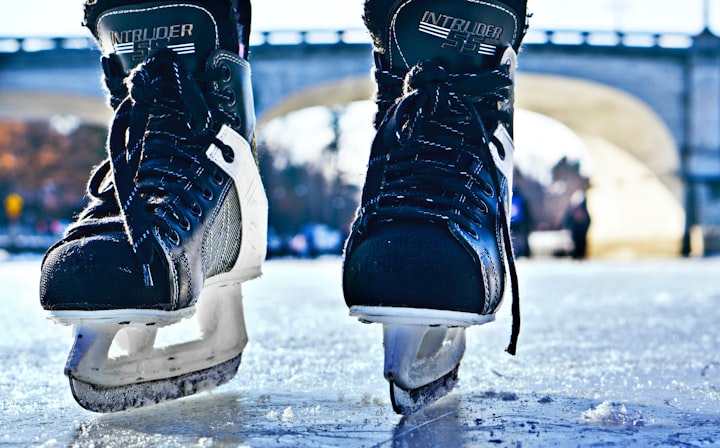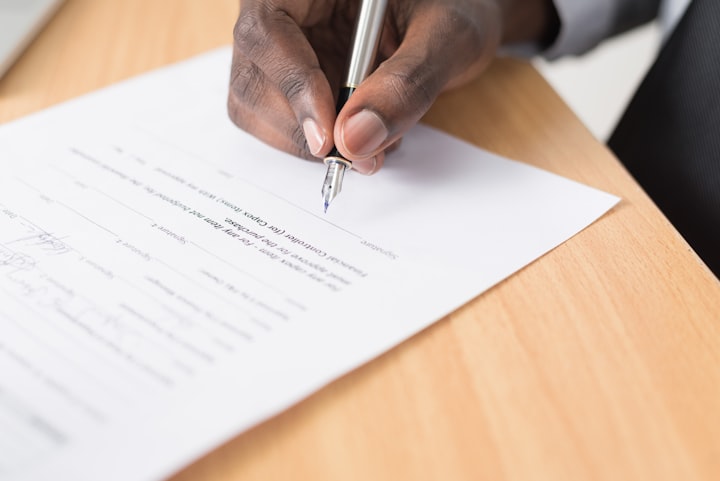Five Thoughts for Friday: Positives from the 2019-20 Season
Rookies, coaching, and more!
The Ottawa Senators last played on March 11th, a 3-2 loss to the Kings. (A game, incidentally, I was planning to be at with friends, until their travel plans changed last minute. Based on the number of Sens who contracted COVID-19 after that game, that probably worked out OK for me.) Since then, no NHL games have been played, meaning we’re now on Day 44 of no hockey. With the news cycle being tragic, bleak, and confusing, I’ve been trying to deliberately find reasons to be positive in my life. I thought it might be a fun exercise to do that for this week’s Five Thoughts. These aren’t the only positives, but they are definitely positive. So here they are: five positives from this season.
1. The Kids are Alright in Belleville
The Sens unveiled the slogan “The Kids Are Alright” (along with accompanying song) to emphasize that the Sens were preparing for the future by playing their young stars. Then the opening night roster featured exactly three rookies — Drake Batherson, Filip Chlapik (who need one more game in 2018-19 to not qualify as a rookie), and Erik Brannstrom — as well as Scott Sabourin, who had never played an NHL game, but at 27 was too old to be a rookie. The Sens went into the season with the 15th-youngest roster in the league, so hardly a notably young roster. Ron Hainsey was the fourth-oldest player to play a game this season, and Craig Anderson was the second-oldest goalie (third if you David Ayres). This led to fans joking that the slogan should be, “The kids are alright... in Belleville”.
But the thing is, the kids WERE alright in Belleville. It was actually a phenomenal season for so many players we were excited for. Josh Norris and Alex Formenton were first and second in AHL rookie scoring. Drake Batherson, Logan Brown, and Rudolfs Balcers all joined Norris at more than a point per game. Brannstrom looked phenomenal after being returned to the AHL. Vitaly Abramov looked to regain some of his scoring touch from junior. Joey Daccord stepped right into the AHL, with a .915 save percentage and a 2.61 GAA, while Filip Gustavsson had worse stats, but was the AHL goalie of the month for January (4-0-1, 1.78, .942). I think even the most optimistic of us didn’t expect this many young players in Belleville to be having good seasons.
2. Coach DJ Smith
I’ve been critical of Smith for sure, but I’d like to take a moment to appreciate what he’s done well. After all, all coaches have blindspots. If I were an NHL coach, I would’ve overplayed guys like Patrick Wiercioch and Shane Prince, who eventually fell out of the NHL. So I’m not going to focus on Connor Brown being the most-used forward, or fourth-line/third-pairing guys getting 5 minutes per night.
No, instead I’d like to acknowledge that DJ Smith did a lot of things right this year. He saw that Thomas Chabot was his number-one defenceman, and didn’t try to force Ron Hainsey into that role. He gave Marcus Hogberg starts over Craig Anderson when the rookie was playing better. A guy like Anthony Duclair was put in a position to thrive, something coaches like Joel Quenneville and John Tortorella couldn’t do, and even gave him penalty kill time where his speed was quite the asset. A guy like Nick Paul got a real chance to play with real teammates like Jean-Gabriel Pageau and Connor Brown, and he turned it into a full-time NHL job. He seemed more willing than pretty much any NHL coach to give young players a chance to succeed, even if it came at the expense of veterans.
Ottawa does have a recent history of first-season love affairs with coaches who then fall out of favour. Paul MacLean won the Jack Adams in his second season — remember the slogan, “Trustache”? Guy Boucher took this team to within a game of the Stanley Cup Finals — remember when we used to talk about The System, capital-T capital-S? Both were nearly run out of town by the end. What I will say about people appreciating Smith is that his first season, the results were not good. The Sens are still second-last in the NHL. So I’m hopeful that our appreciation of Smith’s good moves are a reflection of some good coaching instincts, rather than some bad coaching instincts which we ignore because of short-term success.
3. Thomas Chabot’s emergence
Thomas Chabot has continued to grow in people’s eyes. He came into the NHL with a lot of fanfare, having won MVP at the the World Juniors in 2017. In the 2017-18 season, he forced his way into the NHL. In 2018-19, his hot offensive start got him an All-Star Game nod. But I would argue this season has been his most impressive. Fresh off signing a new extension, some worried that the he might either crack under the pressure of living up to $8M per season, or become complacent with nothing to prove. Instead, he’s turned into a legitimate #1, all-situation defenceman. His 1491 min at even strength (all stats via Natural Stat Trick) was more than 400 more than any other player on the team so far this season. He also played more powerplay minutes than all of the rest of the team’s defencemen added together. On a team with awful possession stats, Chabot managed to put up 50.5% of the 5v5 shot attempts, which only fell behind Maxime Lajoie, Dylan DeMelo, Mike Reilly, and Christian Wolanin, of whom only DeMelo played even half as many minutes as Chabot this season. Chabot played the bulk of his 5v5 minutes with either Ron Hainsey (49.3% together) or Nikita Zaitsev (46.0%), both of whom saw drops when separated from Chabot (44.6% and 44.1% respectively), and Chabot saw his numbers go up a lot without them (51.3%, 54.0%). Basically, Ottawa’s weakness down the right side was holding Chabot’s back. In the 234 min he played with DeMelo, the two put up a dominant 54.9% of the shot attempts. That means that if Chabot can even play with a good NHL defenceman in the future, they should form a very good top pairing.
Chabot may be 16 points off last season’s pace, but likely losing Mark Stone and Matt Duchene played a role, as well as his awful shooting percentage of 3.2% this year (compared to 7.6% last year). I would argue that what he’s been doing this season is more impressive. He’s had to be the team’s best skater, and he’s delivered, propping up a team that isn’t nearly as good when he’s off the ice. It bodes well for the future, having a legit #1 defenceman.
4. Goaltending Depth
This was touched on a bit in the rookies section, but I want to really emphasize this. Ottawa’s goaltending pipeline looks really good. Goalies are the hardest position to project in this sport, so you definitely want lots of options. Gone are the days of Mike Brodeur being the emergency call-up in 2010, or Nathan Lawson playing in 2014, or even Mike McKenna getting starts last season. Suddenly, the Sens’ minor league goalie setup looks promising. Assuming Anders Nilsson recovers from his concussion, he and Marcus Hogberg will slot in as a 1A/1B for next year. Hogberg has more than held his own in the NHL this season, and that should be a decent tandem. Then turning to the AHL, the Sens will have Gustavsson and Daccord going into their third and second AHL seasons respectively. Then the newly-signed Kevin Mandolese, fresh off his .925 save percentage in the QMJHL, will slot in to the ECHL, giving the Sens an option to call up as necessary for when goalies get hurt. Mads Sogaard put up a disappointing season compared to last season — his save percentage dropped from .921 to .908 — and I think it’s incredible that no fans seem that concerned. Sure, I’d love to see him improve on those numbers, but with four goalies age 25 or younger with potential to be at least NHL backups, I’m happy for this to not be a worry for the first time since probably we had Ben Bishop, Robin Lehner, and Craig Anderson all under contract.
5. The Sens’ Social Media
If you’re on Twitter, you may have missed one of the best parts of being a Sens fan — the content put out by Craig Medaglia and WoodzGoodz. Sports team social accounts, and really brand accounts in general, are notoriously cringe-worthy. They try to be edgy and cool. They try to copy the Wendy’s model and roast their competition. Most efforts end up falling very flat. Really the only other NHL team I’d consider to have had some success is the Hurricanes, who’ve done well at branding things like the Bunch of Jerks or the David Ayres win.
But the Sens are in a whole different category. They just make ridiculous, fun, entertaining videos. At least part of the hand-wringing over Dylan DeMelo being traded was his willingness to do their best videos. The Thomas Chabot signing video was great. Even now in quarantine, they’ve been giving us more Sens Play and jujube eating content. I think this is the model that every team should follow — focus on lighthearted, family-friendly fun, giving players a chance to showcase their personalities without being obnoxious. We’ve had our share of disappointments as Sens fans over the past few years, so I just want to say one more time how appreciative I am of a social media account that always makes things better.



